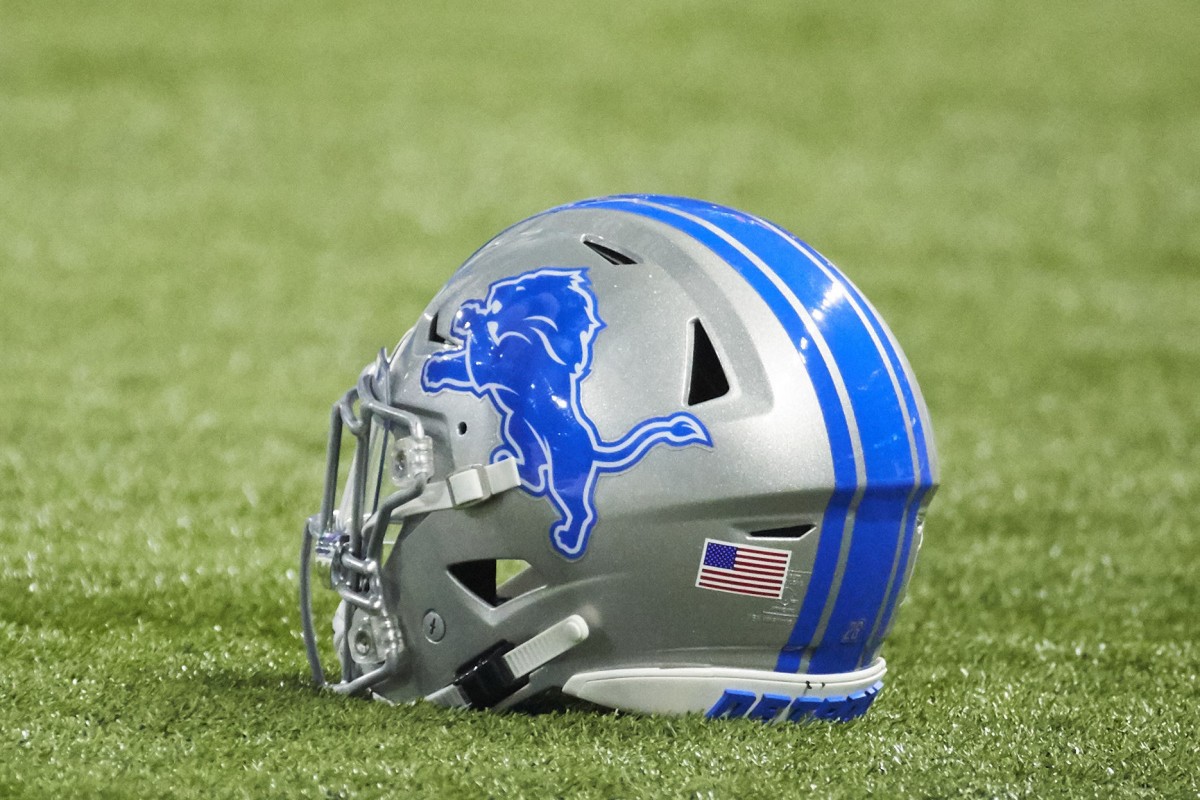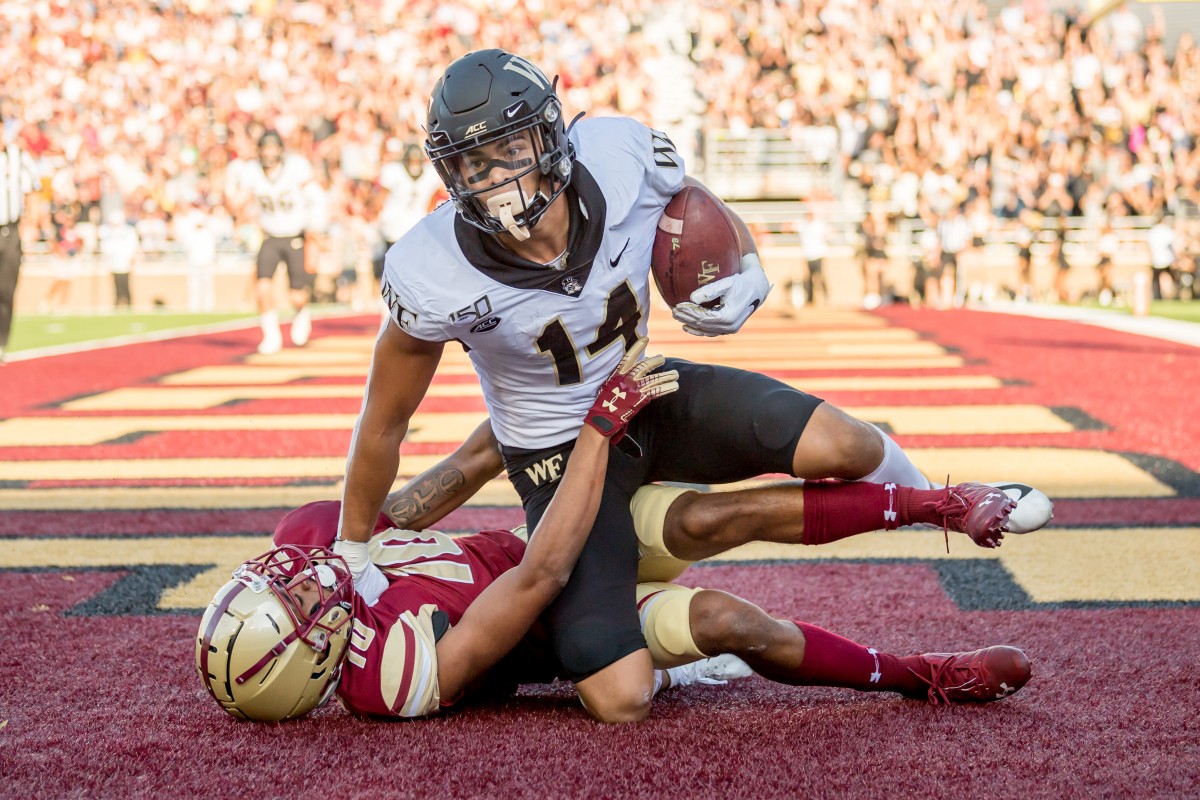One of the takeaways that didn’t make the top four as I drove home from Detroit Lions minicamp was the rather startling lack of proven NFL depth at a number of positions across the Lions roster.
The reality hit me when I was mentally sorting the running backs. D’Andre Swift is in his second season, and he looks very impressive in the receiving drills in the early portions of the offseason. Newcomer Jamaal Williams is also looking special as a receiver (they’re not allowed to tackle or play behind an OL yet, so actually running the ball is still just theoretical).
After that? Seventh-rounder Jermar Jefferson, first-year newcomer Michael Warren and undrafted rookie Dedrick Mills round out the RB room. Warren played exactly two reps on special teams for the Washington Football Team in 2020 as an undrafted free agent from Cincinnati. That represents the entire NFL experience behind Swift and Williams.
It’s incredibly frustrating when factoring in the significant amount of draft capital the past regime spent on running backs, but that’s for a different story. It has led to an intensely tepid public courtship of veteran Todd Gurley and his arthritic knees, which have since marched onto Baltimore after nothing materialized in Detroit in 10 days.
Nothing against Gurley, who was the best all-around RB in football in 2017-2018, but it’s a good thing the Lions haven’t broken character and signed him. And the reason why is in that last sentence: it’s not 2017-2018 anymore. It’s 2021. These Lions are at the beginning of a major overhaul with a new regime from ownership at the top down to the interns in the media relations department.
Is Todd Gurley a better running back in 2021 than Dedrick Mills or Jermar Jefferson? Probably. But upgrading the No. 3 RB spot with a past-his-prime veteran isn’t what this Lions team needs. One of the reasons we’re here is because the last regime decided it was a good idea to cut 2020 fifth-round rookie Jason Huntley before he ever played. Just for good measure they also dumped 2019 sixth-rounder Ty Johnson–the team’s most effective RB as a rookie–too. They did that to bring in Adrian Peterson.
Was Peterson more effective for the 2020 Lions than Johnson or Huntley would have been? For sure; Peterson proved he still had some gas in the old tank. But it certainly didn’t help drive the Lions to success. And because of the decision to chase past glory instead of developing young talent, the roster is that much more barren now because of it.
It’s time for the new Lions under GM Brad Holmes to stop that maddening carousel of clout-chasing, of eschewing the tougher task of player development in the name of spackling veteran putty over cracked walls with rotten studs. It’s time to rebuild the studs, and maybe find some through actual coaching and attention to a longer-term vision.
It’s even truer at wide receiver. If the season started today, the Lions would trot out an 11 (1 RB 3WR) package of Swift in the backfield and new QB Jared Goff throwing to Tyrell Williams, Breshad Perriman and Kalif Raymond.
Here’s what those receivers produced in 2020, none of them in Detroit:
Williams (now age 29): Missed the season with injury.
Perriman (27): 30 catches on 60 targets, 505 yards, 3 TDs, 3 drops. One game (vs. NE) produced 5 catches, 101 yards and 2 of the TDs.
Raymond (27 in August): 9 catches on 16 targets, 187 yards, no TDs, 3 drops.
Williams’ playing history, his Chargers experience with new Lions OC Anthony Lynn and early performance with the Lions dictate that he’s a big part of the mix. Based on the last two weeks it’s very clear Williams is the most talented wide receiver in Detroit.
As for Perriman and Raymond? Rather than repeat the RB mistakes of the past regime, learn from them. The Lions of 2022 and beyond are better if fourth-round rookie Amon-Ra St. Brown and last year’s sixth-rounder, Quintez Cephus, are playing instead of them. Even if Perriman and Raymond are better in the offense right now, the Lions need to learn if St. Brown and Cephus can rise above that and be a part of the future.
(Raymond looks like the clear front-runner for the return specialist job, by the way, and his value to Detroit this year is in that capacity)
Then there is the trio of UDFA rookies: Jonathan Brown, Javon McKinley and Sage Surratt. All three were players projected to be drafted as high as the fourth round just a month out from the 2021 NFL draft. All have shown at least some spark in the last three weeks in Allen Park.
There is no purpose in playing Perriman or Geronimo Allison or Damion Ratley over any of those guys. Any short-term benefit they might offer the new-look offense is outweighed by the need to develop some actual depth in Detroit. Cephus had a great day in camp on Tuesday. Build on that. Surratt destroyed smaller coverage in reps all week. That’s something to work with.
Unless there is a radically clear difference in skill level between the older veteran and the young up-and-comer, there’s absolutely no reason to choose the veteran. Now at tight end, 35-year-old Darren Fells makes an exception.
Fells clearly better at all facets of his position than youngsters Charlie Taumoepeau or Jake Hausmann, and he’s also quickly proven to be a worthy mentor for budding star T.J. Hockenson. A year ago with Jesse James as the No. 2 TE, none of that would have been true. Fells is different, and that’s the kind of case-by-case exception that Holmes, head coach Dan Campbell and the Lions need to value. The likes of Taumoepeau and Hausmann are vying with Alize Mack for the No. 3 spot. Based on the early observations they’re not close to winning that role from the promising young Mack.
By giving the youngsters the keys to the car, the Lions can drive forward with some viable young depth that gains valuable experience. Sure, they might crash here and there. But this season’s Lions are the NFL’s version of a student-driver car: a no-frills learning experience designed to help build for something bigger and better–in due time–for everyone involved.
By teaching the rules of the NFL road to budding young developmental players like Surratt, Jefferson, OT Matt Nelson and LB Tavante Beckett, the Lions just might find something worth keeping. Doing that helps end the cycle of bringing in has-been veterans past their primes, and their primes often weren’t great to begin with. This Detroit coaching staff is loaded with former players who have quickly shown a hands-on approach and enthusiasm for working with players. Utilize that to see what the revamped scouting department and front office can find instead of scouring the scrapyard for what other teams didn’t want anymore.
That’s the culture change I want from Holmes and the 2021 Lions.
[lawrence-related id=62559]










